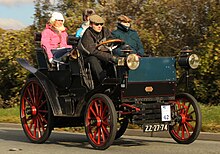
Louis Renault was a French industrialist, one of the founders of Renault, and a pioneer of the automobile industry.

Renault Trucks is a French commercial truck manufacturer with corporate headquarters at Saint-Priest near Lyon. Originally part of Renault, it has been a subsidiary of the Volvo Group since 2001.
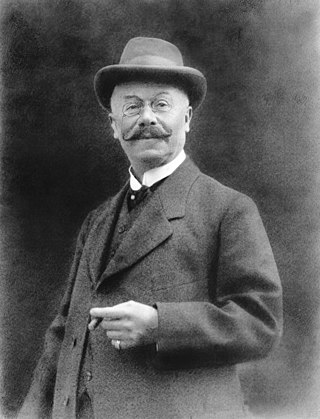
Emil Jellinek, known after 1903 as Emil Jellinek-Mercedes, was an automobile entrepreneur of the Daimler Motoren Gesellschaft (DMG), responsible in 1900 for commissioning the first modern automobile, the Mercedes 35hp. Jellinek created the Mercedes trademark in 1902, naming it in honor of his daughter, Mercédès Jellinek.
Berliet was a French manufacturer of automobiles, buses, trucks and military vehicles among other vehicles based in Vénissieux, outside of Lyon, France. Founded in 1899, and apart from a five-year period from 1944 to 1949 when it was put into 'administration sequestre' it was in private ownership until 1967 when it then became part of Citroën, and subsequently acquired by Renault in 1974 and merged with Saviem into a new Renault Trucks company in 1978. The Berliet marque was phased out by 1980.
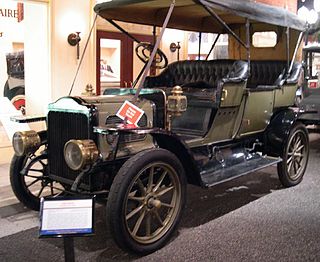
A steam car is a car (automobile) propelled by a steam engine. A steam engine is an external combustion engine (ECE) in which the fuel is combusted outside of the engine, unlike an internal combustion engine (ICE) in which fuel is combusted inside the engine. ECEs have a lower thermal efficiency, but carbon monoxide production is more readily regulated.

Delahaye was a family-owned automobile manufacturing company, founded by Émile Delahaye in 1894 in Tours, France. Manufacturing was moved to Paris following incorporation with two unrelated brothers-in-law as equal partners in 1898. The company built a low volume line of limited production luxury cars with coachbuilt bodies; trucks; utility and commercial vehicles; busses; and fire-trucks. Delahaye made a number of technical innovations in its early years; and, after establishing a racing department in 1932, the company came to particular prominence in France in the mid-to-late 1930s, with its Type 138, Type 135SC, and type 145 cars winning numerous races, and setting International records. The company faced setbacks due to the Second World War, and was taken over by amalgamation with arch competitor Hotchkiss in 1954. Both were taken over by the Brandt organization, within mere months, with automotive product manufacturing ended.

Daimler-Motoren-Gesellschaft was a German engineering company and later automobile manufacturer, in operation from 1890 until 1926. Founded by Gottlieb Daimler (1834–1900) and Wilhelm Maybach (1846–1929), it was based first in Cannstatt. Daimler died in 1900, and their business moved in 1903 to Stuttgart-Untertürkheim after the original factory was destroyed by fire, and again to Berlin in 1922. Other factories were located in Marienfelde and Sindelfingen.

The Mercedes 35 HP was a radical early car model designed in 1901 by Wilhelm Maybach and Paul Daimler, for Emil Jellinek. Produced in Stuttgart, Germany, by Daimler-Motoren-Gesellschaft (DMG), it began the Mercedes line of cars. Its name is derived from the power of the engine, 35 Pferdestärken(26 kW, approximately 35 horsepower).

Chenard-Walcker, also known as Chenard & Walcker, was a French automobile and commercial vehicle manufacturer from 1898 to 1946. Chenard-Walcker then designed and manufactured trucks marketed via Peugeot sales channels until the 1970s. The factory was at first in Asnières-sur-Seine moving to Gennevilliers in 1906. The make is remembered as the winner of the very first Le Mans 24 Hours Race in 1923.

Jean Porporato, originally named Giovanni Giacomo Bernardo Porporato, was an Italian-born French automobile racing driver and mechanic from Turin who later lived much of his life Lyon, Rhône.
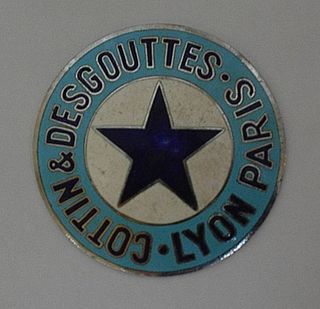
Cottin & Desgouttes was a French automobile manufacturer in the early the 20th century.

Mercedes is a brand originally created by the Daimler-Motoren-Gesellschaft (DMG) and used for first time in the 35 hp model released by the company in 1901. DMG began to develop in 1900, after the death of its co-founder, Gottlieb Daimler. Although the name was not lodged as a trade name until 23 June 1902 and not registered legally until 26 September, the brand name eventually would be applied to an automobile model built by Wilhelm Maybach to specifications by Emil Jellinek. This vehicle was delivered to him on 22 December 1900.
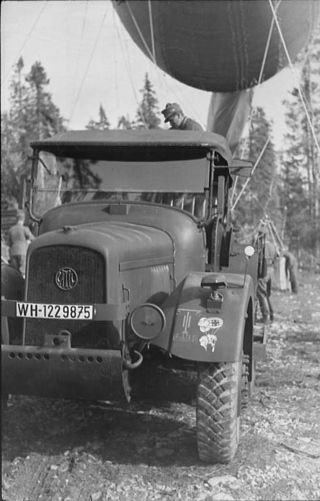
Latil was a French automaker specializing in heavy duty vehicles, such as trucks, agricultural equipment, and buses, from 1898 to 1955. It had factories in Paris, Suresnes, and Marseille.
The 1901 Gordon Bennett Cup, formally titled the II Coupe Internationale, was a motor race held on 29 May 1901, on public roads in France between Paris and Bordeaux, concurrently with an open-entry race over the same course. Initially, France were to defend the Cup against Great Britain, however prior to the start, the sole British entry was forced to fit tyres of foreign manufacture making it ineligible for the Cup. The race was therefore competed by three French entries, the maximum permitted from one country under the rules, guaranteeing that they would retain the Cup. Léonce Girardot driving a Panhard won the race and was the only competitor to finish, with Fernand Charron driving a Panhard and Levegh driving a Mors retiring.

Pierre-Marie-Joseph Desgoutte, whose name is sometimes spelled Desgouttes, was a French industrialist, founder of the Automobiles Cottin et Desgouttes company.

Société Parisienne was a French manufacturer of velocipedes, bicycles and tricycles from 1876. They began limited automobile construction in 1894 and regular light car (voiturette) construction in 1898 or 1899, and they ceased operation in 1903. The vehicles, variously known as Parisienne, Victoria Combination, Eureka, l'Eclair, Duc-Spider and Duc-Tonneau, were manufactured by Société Parisienne E. Couturier et Cie of Paris.
Rétrospectives Automobiles Miniatures was a French manufacturing company that made diecast scale model collector vehicles mostly of classic French automobiles in 1:43 scale. The acronym was seen on packaging without the periods between the letters of the acronym, but on some of the vehicle bases with the punctuation. "J.M.K." was a further acronym that stood for the three founding members of the company: M. Jarry, Henri Malartre and M. Koch. Though the models were often known simply as RAMI, the full name of the company was RAMI by J.M.K.

The Lavirotte Building, an apartment building at 29 Avenue Rapp in the 7th arrondissement of Paris, France, was designed by the architect Jules Lavirotte and built between 1899 and 1901. The building is one of the best-known surviving examples of Art Nouveau architecture in Paris. The facade is lavishly decorated with sculpture and ceramic tiles made by the ceramics manufacturer Alexandre Bigot. Lavirotte was awarded the prize for the most original new facade in the 7th arrondissement in 1901.
Thomas Charles Willis Pullinger CBE OBE OBK JP was an English automobile engineer. He began his career working with bicycles before the first cars were built. After working for Sunbeam and Humber, he helped expand the Scottish works of Arrol-Johnston, where he developed structured apprenticeship programmes and an engineering college for women.
Société du carburateur Zénith was a French corporation specialized in the making of carburettors for both automotive and aerospace industries. Created in Lyon in 1909 by car manufacturer Rochet-Schneider, it was taken over in 1970 by German company DVG. One of the main carburettor manufacturers of the 20th century, it had factories in Lyon and abroad, including in the United States and the United Kingdom.

